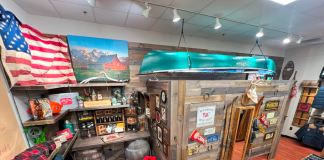Actually, the term “crime” may be a little strong. Slacklining has never been specifically banned in the city, but two Boulder, Colo., city ordinances made setting one up against municipal code. That was tough for Slackline Industries, which called Boulder home. But the folks at Slackline Industries are no longer “outlaws in their own town.”
After years of lobbying the local government and helping to build community support, a new rule will allow Boulder’s slacklining community to practice the sport in specified locations.
“It’s like starting a brewery in the 1930s or being a Cuban travel agent. All the sudden you’re not such an outlaw,” said Ricardo Bottome, CEO of Slackline Industries.
With the help of Slackline Industries and local community members, city officials drew up a new set of guidelines over the last year. The new rules allow slacklining in six parks across Boulder. Although under the ordinances, those caught attaching anything to trees or city property could face a $250 fine, and tree protection must be used.
“Slackline Industries really helped push the whole initiative forward from the start,” Jeff Haley, planning, design and community engagement manager at Boulder Parks and Recreation said. “They have been involved for a few years now, advocating for the ordinance change and finding creative ways to connect the city and local stakeholders.”
Of course, it’s not a free-for-all. A list of the rules governing the use of slacklines in Boulder is available online at https://bouldercolorado.gov/forestry/slackline.
Otherwise, here is a summary of the rules:
- Slacklining is only allowed on designated trees. Please see the interactive map online to identify the approved trees.
- Slacklining is only permitted during park hours.
- Participants and spectators assume all risk associated with the activity.
- All slacklines may be affixed on a temporary basis and may not be left unattended. Unattended equipment will be removed and considered abandoned property.
- Tree protection material must be placed between the tree and the line that is fixed to the tree. Material must be at least ¼” inch thick and at no time should any cabling, wires or lines be in direct contact with the bark of the tree.
- The slackline may not be elevated to a height of more than four feet at the center of the span when the user is on the line and weighting it.
- The slackline may not obstruct the intended uses of the park, sidewalks, buildings, roads, streets, playgrounds, bikeways, water features, sport courts, bike racks, handrails, art objects, fences or light poles.
- When the slackline length exceeds 50 feet, visible safety tags or flags must be used to alert park users that the line is in place.
- Trees and/or landscaped areas showing damage from slacklining activities may be restricted.
- Slacklines may only be attached to approved trees and may not be affixed to any other infrastructure including but not limited to buildings, bike racks, handrails, art objects, fences or light poles.
- Activities such as stunts or tricks involving flips are not permitted.
- Slacklines must be removed for any park permit use or regular maintenance such as lawn mowing or tree pruning.
RELATED: STABIL Partners with the National Park Foundation








